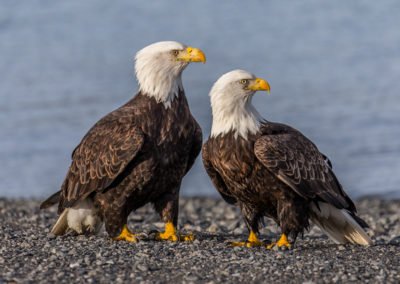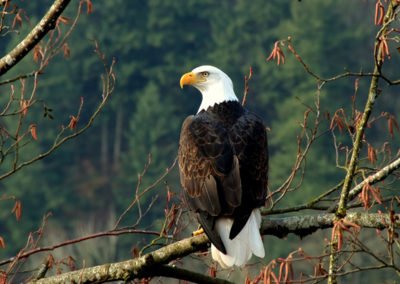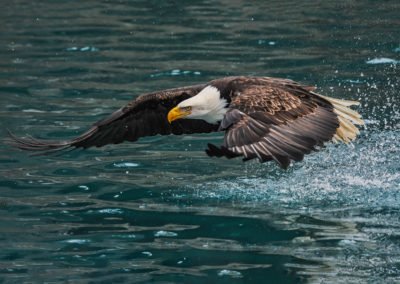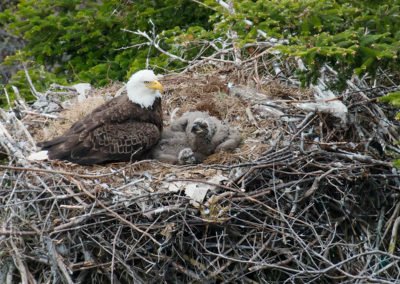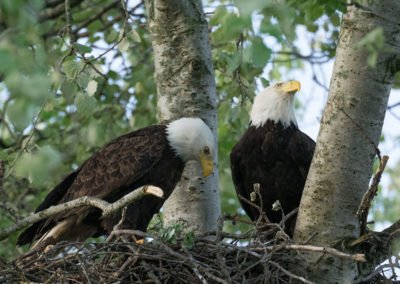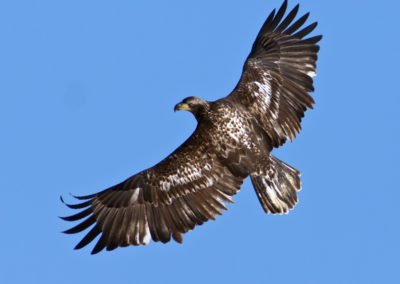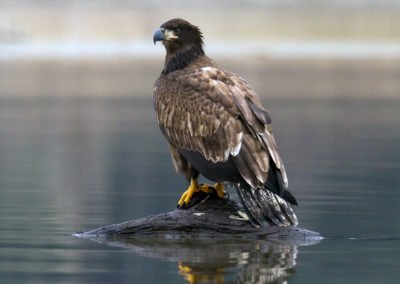For More Information
Bald Eagle. Hawkwatch International.
Bald eagles, symbol of America, are dumping trash on the Seattle suburbs. April 2, 2019. New York Times.
Cruz, J, Windels, SK, Thogmartin, WE, Crimmins, SM, Grim, LH, Larson, JH, & Zuckerberg, B. 2019, in press. Top‐down effects of repatriating bald eagles hinder jointly recovering competitors. Journal of Animal Ecology.
Jewett, SG, Taylor, WP, Shaw, WT, & Aldrich, JW. 1953. Birds of Washington State, 176-178. University of Washington Press.
Bald Eagle
Haliaeetus leucocephalus
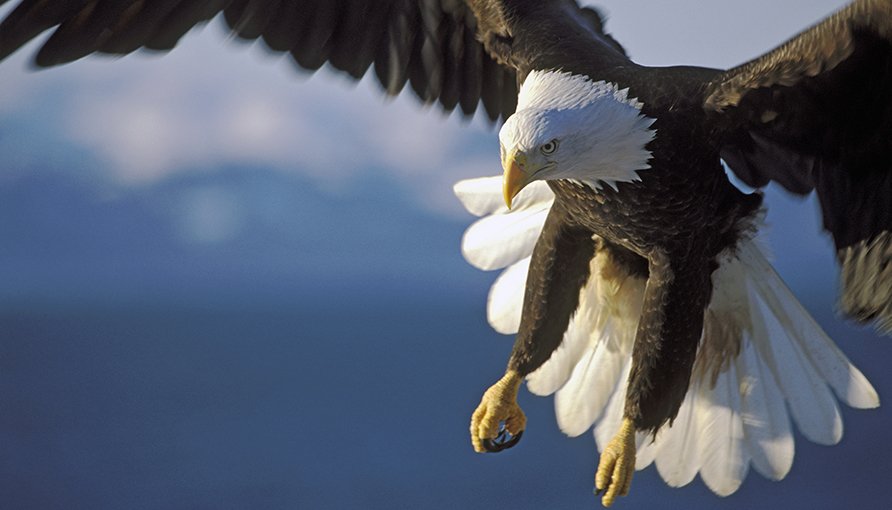
Adult Bald Eagle.
Rokopix, Shutterstock.
In the mid-20th century, the Bald Eagle in Western Washington was described as a “common permanent resident… frequenting the
Only adults have the white head and tail feathers of the iconic Bald Eagle. Subadults are mostly brown, developing adult plumage over four-six years.
Bald Eagles are primarily scavengers and opportunistic hunters, commonly stealing fish from Ospreys. And in the spring, they add Osprey and Great Blue Heron eggs and nestlings to their diet. Eagles also hunt waterfowl and fish, sometimes by patrolling bodies of water on the wing, but they prefer to search the water from a high perch.
Urban History
No early records describe Bald Eagles nesting in Seattle, but they probably nested along the city’s shores. The first recorded nest in Seattle was in 1980 (Seward Park), the second in 1987 (Discovery Park). As of 2018, about 12 active territories are known. Bald Eagles in Seattle are considered year-round (nonmigratory) residents, staying around their territory about 10 months of the year.
- August-October—Most eagles leave to feast on spawned-out salmon carcasses along northern rivers.
- October—Adults may return to their territories to build new nests or repair old ones. Newly mature pairs usually form later in spring than do established pairs and are less experienced with nest construction.
- February—Courtship and nest building pick up
- Early April—Most pairs are on eggs, typically two, incubated by both parents for 35 days.
- May—Young hatch. The 3-ounce nestlings are fed, mostly by the female, for the first 5 weeks.
- Late July-August—Young take flight, remaining on their natal territory for another month before heading north on their own. Subadults are nomadic until sexually mature.
To say that eagles have adapted to urban living is an understatement. Compared to the first city nest high up a tall tree inside a relatively tranquil park, more recent eagle nests have included back yards, sometimes even next to a house under construction. In some places, urban Bald Eagles have adapted too well, applying their scavenging nature to overflowing landfills such as in the city of Kent, just south of Seattle.
1-6: Adults. 7,8: Subadults. (1) Andy Morffew, Flickr. (2) Ingvar Grimsmo, Shutterstock. (3) FloridaStock, Shutterstock. (4) Paul Reeves Photography, Shutterstock. (5) Chris Hill, Shutterstock. (6) Carol Kelpin, Shutterstock. (7) Michael G. Mills, Shutterstock. (8) Rowdy Soetisna, Shutterstock.
